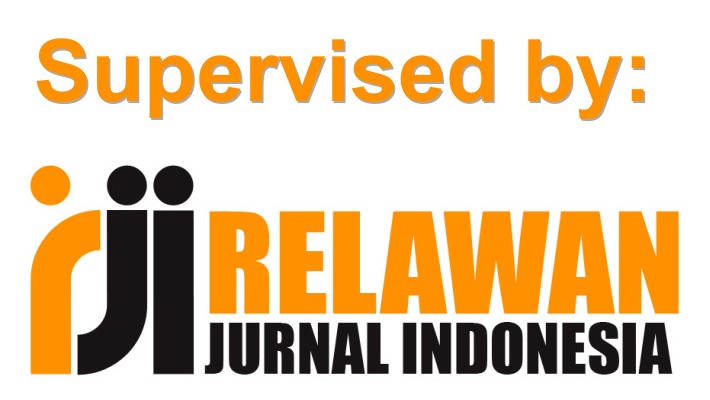Pengaruh Rasio Profitabilitas Terhadap Pertumbuhan Laba Pada Sub Sektor Semen Yang Terdaftar Di Bursa Efek Indonesia
DOI:
https://doi.org/10.31851/jmanivestasi.v6i2.17814Abstract
ABSTRACT
This study aims to determine the effect of the ratio of Return On Equity (ROE), Return On Investment (ROI) and Net Profit Margin (NPM) on Profit Growth in Cement Sub-sector companies listed on the Indonesia Stock Exchange (IDX) in 2016 to 2020 partially. and simultaneously. In this study, the population used were 6 companies in the cement sub-sector listed on the Indonesia Stock Exchange (IDX) and based on purposive sampling, 6 companies met the criteria. The data observed are secondary data, namely the financial statements of the Cement Sub- Sector companies listed on the Indonesia Stock Exchange (IDX) in 2016 to 2020. Data analysis and discussion were carried out using quantitative methods, in solving this research problem using SPSS software (Statistical Product and Service Solution) for Windows The results of the partial study are that Return On Equity (ROE) has a significant effect on profit growth, Return On Investment (ROI) has no significant effect on profit growth, and Net Profit Margin (NPM) has no significant effect on profit growth simultaneously. Return On Equity (ROE), Return On Investment (ROI), and Ner Profit Margin (NPM) have a significant effect on profit growth. Potential investors and issuers (companies) should pay more attention to the company's performance first.
Keywords : Return On Equity, Return On Investment, Net Profit Margin, and Profit Growth.
ABSTRAK
Penelitian ini bertujuan untuk mengetahui pengaruh rasio Return On Equity (ROE),Return On Invement (ROI) dan Net Profit Margin (NPM) terhadap pertumbuhan Laba pada perusahaan sub sektor semen yang terdaftar di bursa efek indonesia (BEI) tahun 2016 sampai 2020 secara persial dan secara simultan. Pada penelitian ini populasi yang digunakan adalah 6 perusahaan yang memenuhi kriteria. Data yang dimati merupakan data sekunder yaitu laporan keuangan perusahaan sub sektor semen yang terdaftar di bursa efek indonesia (BEI) pada tahun 2016 sampai dengan 2020. Analisis data dan pembahasan dilakukan dengan metode kuantitatif, dalam memecahkan masalah penelitian ini menggunakan sofware SPSS (statical product and service solution) for windows hasil penelitian secara persial adalah Return On Equity (ROE) berpengaruh signifikan terhadap pertumbuhan laba, Return On Invesment (ROI) tidak berpengaruh signifikan terhadap pertumbuhan laba, dan Net Profit Margin (NPM). Tidak berpengaruh signifikan terhadap pertumbuhan laba secara simultan Retrun On Equity (ROE), Retrn On Invesment (ROI), dan Net Profit Margin (NPM) berpengaruh Signifikan terhadap pertumbuhan laba. Bagi para calon investor dan emiten ( perusahaan ) sebaiknya lebih memperhatikan kinerja perusahaan terlebih dahulu.
Keywords : Return On Equity, Return On Invesment, Net Profit Margin, dan Pertumbuhan Laba.
References
Afifah. (2016). Pengaruh Rasio Profitabilitas Terhadap Pertumbuhan Laba Pada Perusahaan Manufaktur Yang Terdaftar Di Bursa Efek Indonesia. Ekonomi Akutansi, 1-13
Fahmi, I. (2018). Pengantar Manajemen Keuangan . Bandung : Alfabeta.
Fahmi, I. (2014). Analisis kinerja Keuangan . Bandung : Alfabeta
Handayani, S. F. (2019). Pengaruh Profitabilitas Dan Rasio Aktivitas Terhadap Pertumbuhan Laba Perusahaan (Studi Kasus Pada Perusahaan Pertambangan Yang Terdaftar Di Bursa Efek Indonesia). Jom Fisip Vol 2019, 13,1-25
Harahap, Sofiyan, Syafri (2013). Analisis Kritis Atas Laporan Keuangan . Jakarta: Edisi Pratama,Raja Grafindo Persada.
Hery. (2015). Analisis Laporan Keuangan. Yogyakarta:Caps.
Jumingan. (2014). Analisi Laporan Keuangan .Jakarta.PT Bumi Aksara.
Kasmir. (2019). Analisis Laporan Keuangan. Depok: Rajawali Pers.
Sugiyono. (2018). Metode Penelitian Kuantitatif,Kualitatif Dan Kombinasi. (Mixel Methods).
Downloads
Published
Issue
Section
License
Copyright (c) 2025 Jurnal Manajemen dan Investasi (MANIVESTASI)

This work is licensed under a Creative Commons Attribution-NonCommercial 4.0 International License.
The copyright of the received article shall be assigned to the publisher of the journal licensed under a Creative Commons Attribution-NonCommercial 4.0 International License in line with the license, authors and any users (readers and other researchers) are allowed to share and adapt the material only for non-commercial purposes. In addition, the material must be given appropriate credit, provided with a link to the license, and indicated if changes were made. If authors remix, transform or build upon the material, authors must distribute their contributions under the same license as the original.



















